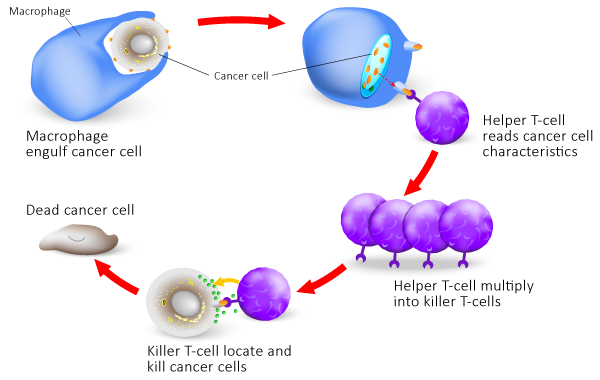Immunothearpy

Last week the third application note in the Northeastern University series was released. Two of the notes illustrate how HoloMonitor-technology is used within a new and very promising cancer research field – immunotherapy or immuno-oncology, as it also is called.
The immune system
In a never ending battle, the immune system keeps our bodies clean from harmful bacteria and virus infected cells. The immune system also destroys cancer cells before they have a chance to form tumors. Unfortunately, the formation of tumors is a sign of that the immune system is losing the battle against the cancer cells.
The various types of white blood cells are a key component of the immune system. Macrophages and other “eater cells” constantly cruise our bodies in search of harmful cells or bacteria. In a second line of defense, the macrophages train T-cells to form special forces that in vast numbers hunt down and kill intruders.
Bacteria and cells infected with foreign virus are easily identified by the immune system. Cancer cells are, however, the body’s own cells that only differ in that they multiply uncontrollably. This makes it more difficult for the immune system to detect and fight cancer cells. The immune cells need to be very careful when attacking cancer cells, as they risk attacking perfectly healthy cells by mistake.

Immunotheraphy
The basic idea of immunotherapy is to stimulate the immune cells to more efficiently fight cancer. As in the Northeastern application notes, this can be done by helping the macrophages in identifying cancer cells, or it can be done by making the T-cells more efficient killers. In CAR T-cell immunotherapy, for example, the patient’s own T-cells are genetically modified, artificially cultured and re-injected to specifically recognize and kill cancer cells.
By comparing how fast immune cells move towards cancer cells before and after stimulation, our HoloMonitor technology allows cancer researchers to non-destructively measure the efficiency and precision of immunotherapy, in ways not previously possible. In recorded time-lapse movies, researchers can literally see immune cells charge towards cancer cells and destroy them after they have been stimulated.
As discussed in a recent MIT Technology Review article, immunotherapies are expected to be personalized treatments in which living cells from the patient is the treatment. Personalized cell therapy treatments are today very labor intensive, making them extremely expensive. To make such treatments affordable it is crucial that cell culturing technology is automated and industrialized on a large scale.
The progress by Northeastern University and other customers have shown that HoloMonitor technology has the potential to be the non-destructive tool that makes large scale immunotherapies successful and affordable to all patients.


